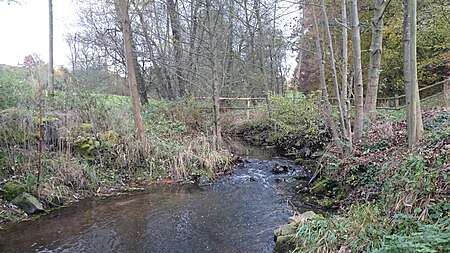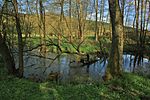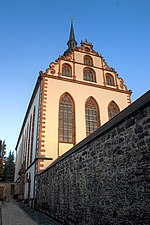The Abbey of Fulda (German Kloster Fulda, Latin Abbatia Fuldensis), from 1221 the Princely Abbey of Fulda (Fürstabtei Fulda) and from 1752 the Prince-Bishopric of Fulda (Fürstbistum Fulda), was a Benedictine abbey and ecclesiastical principality centered on Fulda, in the present-day German state of Hesse.
The monastery was founded in 744 by Saint Sturm, a disciple of Saint Boniface. After Boniface was buried at Fulda, it became a prominent center of learning and culture in Germany, and a site of religious significance and pilgrimage through the 8th and 9th centuries. The Annals of Fulda, one of the most important sources for the history of the Carolingian Empire in the 9th century, were written there. In 1221 the abbey was granted an imperial estate to rule and the abbots were thereafter princes of the Holy Roman Empire. In 1356, Emperor Charles IV bestowed the title "Archchancellor of the Empress" (Erzkanzler der Kaiserin) on the prince-abbot. The growth in population around Fulda would result in its elevation to a prince-bishopric in the second half of the 18th century.
Although the abbey was dissolved in 1802 and its principality was secularized in 1803, the diocese of Fulda continues to exist.









